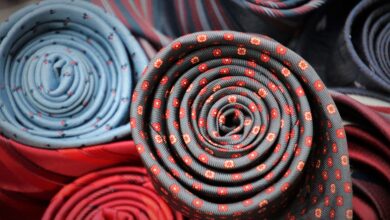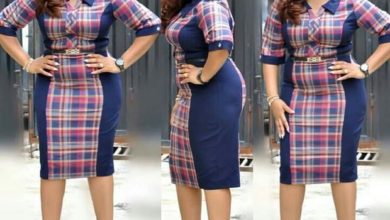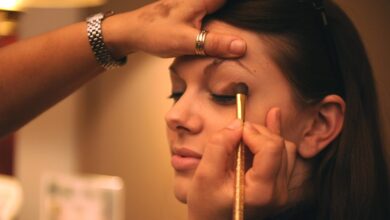Dress to match outfit

Introduction
In the world of fashion, dressing to match is more than just about putting together a coherent outfit. It’s a fundamental aspect that can significantly impact your overall appearance and how others perceive you. Understanding the nuances of matching outfits is key to creating a polished and stylish look that reflects your personal taste and sense of style. Let’s delve into the importance of dressing to match and how coordination plays a pivotal role in the world of fashion.
Understanding the Importance of Dressing to Match
Matching your outfit involves more than just throwing together pieces of clothing that happen to be the same color or pattern. It’s about creating a cohesive and harmonious ensemble that speaks to your personality and style. When you dress to match, you exude a sense of intentionality and attention to detail that can elevate your overall appearance.
Exploring the Impact of Matching Outfits on Overall Appearance
The way you dress can have a profound effect on how others perceive you. Matching outfits can convey a sense of confidence, professionalism, and sophistication. Conversely, mismatched or poorly coordinated ensembles can detract from your overall look and leave a less-than-favorable impression. By understanding the principles of dressing to match, you can ensure that you always put your best foot forward.
Emphasizing the Role of Coordination in Fashion
Coordination is the cornerstone of successful outfit planning. It involves carefully selecting pieces that complement each other in terms of color, pattern, texture, and style. When done effectively, coordination can create a cohesive and visually appealing look that highlights your individuality and sense of style. Whether you’re dressing for a formal event or a casual outing, mastering the art of coordination is essential for creating memorable and impactful outfits.
Part 1: Principles of Coordination
Understanding Color Theory in Fashion
Color plays a crucial role in outfit coordination, as it can evoke certain emotions and convey different messages. Understanding the basics of color theory—such as complementary, analogous, and monochromatic color schemes—can help you create harmonious and visually pleasing outfits.
Exploring Color Harmonies and Combinations
Harmonizing colors involves selecting hues that work well together to create a balanced and coordinated look. Experimenting with different color combinations can add depth and dimension to your outfits, allowing you to express your personal style in creative ways.
Choosing Colors That Complement Each Other
When selecting colors for your outfit, consider factors such as skin tone, hair color, and personal preference. Opt for shades that complement your natural features and enhance your overall appearance. By choosing colors thoughtfully, you can create a cohesive and flattering look that suits your individual style.
The Role of Contrast in Outfit Coordination
Contrast is another essential element of outfit coordination, as it helps create visual interest and draw attention to specific areas of your outfit. Whether it’s through color contrast, texture contrast, or silhouette contrast, incorporating varying degrees of contrast can add depth and dimension to your look.
Part 2: Coordinating Patterns and Textures
Mixing and Matching Patterns for Visual Interest
Pattern mixing is a popular technique in fashion that involves combining different prints and motifs to create a dynamic and eye-catching ensemble. Whether you’re pairing stripes with florals or polka dots with plaids, experimenting with pattern mixing can add personality and flair to your outfits.
Understanding Scale and Proportion in Pattern Mixing
When mixing patterns, it’s essential to consider scale and proportion to ensure a harmonious look. Pair larger-scale patterns with smaller-scale ones to create balance and avoid overwhelming your outfit. By paying attention to scale and proportion, you can create visually striking outfits that showcase your creativity and fashion-forward sensibility.
Incorporating Textures for Dimensional Outfits
Texture is another important element of outfit coordination, as it adds tactile interest and depth to your look. Mixing textures—such as silk with denim or leather with lace—can create contrast and visual intrigue, resulting in a more dynamic and visually appealing ensemble.
Balancing Different Textures in an Ensemble
When incorporating textures into your outfit, aim for a balanced mix of smooth and textured fabrics to create a cohesive look. Consider the overall aesthetic you want to achieve and choose textures that complement each other while adding visual interest. By striking the right balance, you can create outfits that are both stylish and sophisticated.
Part 3: Dressing for Different Occasions
Choosing Appropriate Outfits for Various Events
Different occasions call for different dress codes, so it’s essential to choose outfits that are appropriate for the event you’re attending. Whether it’s a formal gala, a casual brunch, or a professional networking event, dressing appropriately shows respect for the occasion and those in attendance.
Selecting Formal Attire for Special Occasions
For formal events such as weddings, galas, or black-tie affairs, opt for elegant and sophisticated attire that reflects the formality of the occasion. For men, this may mean a tailored suit or tuxedo, while women may opt for a chic evening gown or cocktail dress. Pay attention to details such as fabric, cut, and fit to ensure a polished and refined look.
Opting for Casual Yet Stylish Looks for Everyday Wear
Casual doesn’t have to mean sloppy. Elevate your everyday style by opting for comfortable yet stylish outfits that reflect your personal taste and lifestyle. Whether you’re running errands, meeting friends for coffee, or lounging at home, choose pieces that are both fashionable and functional.
Adapting Outfits for Professional Settings
In professional settings such as the workplace or business meetings, dressing appropriately can help you command respect and project confidence. Opt for tailored pieces, classic silhouettes, and neutral colors for a polished and professional look. Pay attention to grooming and accessorize minimally for a streamlined and sophisticated ensemble.
Part 4: Matching Accessories
Selecting Accessories That Complement the Outfit
Accessories are the finishing touches that can elevate your outfit from ordinary to extraordinary. Whether it’s a statement necklace, a sleek watch, or a stylish belt, choose accessories that complement your outfit and add a touch of personality to your look.
Choosing Jewelry That Enhances the Look
When selecting jewelry, consider the neckline, color, and style of your outfit to ensure a cohesive look. Opt for pieces that enhance your ensemble without overpowering it, and don’t be afraid to mix metals or experiment with layering for added interest.
Picking the Right Handbag or Purse for the Ensemble
Your choice of handbag or purse can make or break your outfit, so choose wisely. Consider factors such as size, shape, and color when selecting a bag that complements your outfit and suits your needs. Whether you prefer a structured tote, a slouchy hobo, or a sleek clutch, make sure it complements your outfit and adds functionality to your look.
Selecting Shoes That Coordinate with the Outfit
Shoes are another crucial component of outfit coordination, as they can tie your look together and make a statement. Choose shoes that complement the style, color, and silhouette of your outfit, and consider factors such as heel height and comfort for practicality. Whether you opt for classic pumps, stylish sneakers, or trendy boots, make sure they enhance your overall ensemble.
Part 5: Dressing According to Body Type
Understanding Body Shape and Proportions
Understanding your body shape and proportions is essential for dressing in a way that flatters your figure and accentuates your best features. Whether you have an hourglass, pear, apple, or rectangle body shape, knowing how to dress for your body type can help you feel confident and stylish in any outfit.
Choosing Silhouettes That Flatter Your Figure
When selecting clothing, opt for silhouettes that enhance your body shape and create a balanced and proportionate look. For example, if you have an hourglass figure, consider fitted styles that accentuate your waist, while those with a pear shape may opt for A-line skirts or wide-leg pants to balance out their proportions.
Highlighting Best Features with Strategic Outfits
Draw attention to your favorite features and downplay areas you’re less confident about by strategically choosing outfits that highlight your best assets. Whether it’s a v-neck top to elongate your neckline, a high-waisted skirt to define your waist, or a statement accessory to draw attention upward, choose pieces that make you feel confident and comfortable in your own skin.
Part 6: Dressing for Different Seasons
Adapting Outfits to Seasonal Changes
As the seasons change, so too should your wardrobe. Adapting your outfits to the weather and climate ensures that you stay comfortable and stylish year-round. Whether it’s layering up for winter, opting for lightweight fabrics in summer, or incorporating seasonal colors and prints, dressing for the seasons allows you to embrace the changing weather while staying true to your personal style.
Choosing Lightweight Fabrics for Summer
When the temperatures rise, it’s essential to stay cool and comfortable in lightweight and breathable fabrics. Opt for natural materials such as cotton, linen, and silk that allow your skin to breathe and help regulate your body temperature. Whether you’re lounging at the beach or attending a backyard barbecue, lightweight fabrics are your best bet for staying stylish and comfortable in the summer heat.
Layering for Fall and Winter
As the weather cools down, layering becomes key to staying warm and stylish during the fall and winter months. Start with lightweight base layers such as tanks or long-sleeve tops, then add insulating layers such as sweaters, cardigans, and jackets for added warmth. Experiment with different textures and lengths to create visually interesting outfits that keep you cozy all season long.
Incorporating Bright Colors for Spring
Spring is the perfect time to embrace vibrant colors and playful prints after the dreary days of winter. Incorporate bright hues such as coral, turquoise, and sunny yellow into your outfits to add a pop of color and infuse your wardrobe with a sense of freshness and vitality. Whether it’s a bold floral dress, a cheerful blouse, or a colorful accessory, adding bright colors to your spring outfits is sure to lift your spirits and brighten your day.
Part 7: Incorporating Personal Style
Expressing Individuality Through Clothing Choices
Fashion is a form of self-expression, and your clothing choices are a reflection of your personality, tastes, and values. Whether you have a classic, bohemian, edgy, or eclectic style, embracing your personal style allows you to stand out and make a statement without saying a word.
Experimenting with Different Styles and Trends
Fashion is ever-evolving, and experimenting with different styles and trends is a fun way to keep your look fresh and exciting. Whether you’re trying out the latest runway trends, experimenting with vintage-inspired looks, or putting your own twist on a classic style, don’t be afraid to step out of your comfort zone and try something new.
Mixing Classic Pieces with Trendy Elements
The key to creating a timeless and versatile wardrobe is finding the perfect balance between classic pieces and trendy elements. Invest in timeless staples such as a tailored blazer, a little black dress, or a well-fitted pair of jeans, then mix in trendy pieces such as statement accessories, bold prints, or contemporary silhouettes to keep your look current and on-trend.
Part 8: Dressing for Cultural Contexts
Respecting Cultural Sensitivities in Fashion
In a globalized world, it’s essential to respect and appreciate cultural diversity, especially when it comes to fashion. Be mindful of cultural sensitivities and avoid appropriating or misrepresenting traditional clothing or symbols from other cultures. Instead, celebrate diversity by incorporating elements of different cultures into your outfits in a respectful and tasteful manner.
Adapting Outfits When Traveling Abroad
When traveling to different countries and cultures, it’s essential to dress appropriately and respect local customs and traditions. Research the dress codes and cultural norms of your destination beforehand, and pack clothing that is respectful and suitable for the local climate and customs. By dressing thoughtfully and respectfully, you can show appreciation for the local culture and avoid inadvertently causing offense.
Celebrating Diversity Through Fashion Choices
Fashion has the power to bring people together and celebrate cultural diversity in all its forms. Embrace multiculturalism by incorporating traditional clothing, textiles, and accessories from different cultures into your outfits. Whether it’s a handwoven scarf, an embroidered jacket, or a beaded necklace, celebrating diversity through fashion allows you to connect with people from different backgrounds and showcase the beauty of cultural exchange.
Part 9: Coordinating Family Outfits
Creating Harmonious Looks for Family Photos
Family photos are a cherished memento, and coordinating outfits can help create a cohesive and visually appealing look for your photoshoot. Choose a color palette or theme that complements each family member’s style and personality, and mix and match outfits to create a harmonious and coordinated ensemble.
Matching Outfits for Special Family Events
Whether it’s a family reunion, holiday gathering, or milestone celebration, matching outfits can add a sense of unity and togetherness to special family events. Coordinate outfits by color, pattern, or theme to create a cohesive and memorable look that reflects your family’s unique style and personality.
Ensuring Consistency in Style Choices
While coordinating family outfits can be fun, it’s essential to ensure consistency in style choices to avoid clashing or overwhelming your photos. Choose outfits that strike a balance between individuality and cohesion, and encourage family members to express their personalities while staying true to the overall theme or color scheme.
Part 10: Styling Tips for Matching Outfits
Layering Techniques for Depth and Interest
Layering is a versatile styling technique that adds depth and dimension to your outfits. Experiment with different layers such as cardigans, vests, scarves, or jackets to create visual interest and texture. Play with lengths, textures, and colors to achieve a balanced and harmonious look that showcases your personal style.
Accessorizing Strategically for Maximum Impact
Accessories are the secret weapon of any stylish outfit, adding personality, flair, and visual interest to your look. Choose accessories that complement your outfit and enhance its overall aesthetic, whether it’s statement jewelry, a stylish belt, or a trendy scarf. Don’t be afraid to mix and match accessories to create a unique and personalized look that reflects your individual style.
Mixing Textures for Added Dimension
Texture is an often overlooked element of outfit coordination, but it can make a significant difference in the overall look and feel of your ensemble. Experiment with different textures such as silk, lace, leather, or denim to add depth and dimension to your outfits. Whether you’re pairing a chunky knit sweater with a sleek pencil skirt or mixing velvet with satin, incorporating texture into your outfits can take your look to the next level.
Part 11: Avoiding Fashion Mistakes
Common Errors to Avoid in Outfit Coordination
While experimenting with fashion is fun, it’s easy to make mistakes that can detract from your overall look. Avoid common fashion faux pas such as wearing ill-fitting clothes, over-accessorizing, or mismatching colors and patterns. By paying attention to detail and following the principles of outfit coordination, you can avoid these common pitfalls and create stylish and polished outfits every time.
Clashing Colors and Unflattering Combinations
One of the most common mistakes in outfit coordination is clashing colors or choosing unflattering color combinations. Avoid pairing colors that clash or wash you out, and opt for shades that complement your skin tone and natural features. Experiment with different color combinations to find what works best for you, and don’t be afraid to consult a color wheel for guidance.
Overcomplicating Patterns and Textures
While mixing patterns and textures can add visual interest to your outfit, it’s essential to strike the right balance and avoid overcomplicating your look. Choose one statement piece or focal point and keep the rest of your outfit relatively simple to avoid overwhelming your ensemble. Remember, less is often more when it comes to patterns and textures, so choose wisely and let your statement piece shine.
Part 12: Seeking Inspiration
Finding Inspiration from Fashion Influencers
Fashion influencers are a valuable source of inspiration for outfit ideas, styling tips, and trend forecasts. Follow your favorite influencers on social media platforms such as Instagram, Pinterest, or TikTok to stay up-to-date on the latest fashion trends and get inspired to try new looks.
Exploring Runway Trends for Innovative Ideas
Runway shows are a hotbed of creativity and innovation, showcasing the latest trends and avant-garde designs from top fashion designers. Keep an eye on fashion weeks in major cities such as New York, Paris, Milan, and London for a sneak peek at upcoming trends and ideas for incorporating them into your wardrobe.
Drawing Ideas from Fashion Blogs and Magazines
Fashion blogs and magazines are a treasure trove of outfit inspiration, featuring editorials, street style photos, and trend reports from around the world. Whether you prefer print publications or digital platforms, explore a variety of fashion blogs and magazines to discover new styles, trends, and outfit ideas to try.
Part 13: Budget-Friendly Matching Outfits
Shopping Smart for Affordable yet Stylish Clothing
Dressing to match doesn’t have to break the bank. With a little creativity and resourcefulness, you can find affordable yet stylish clothing options that fit your budget. Look for sales, discounts, and clearance events at your favorite stores, or shop at thrift stores, consignment shops, or online marketplaces for pre-loved treasures at a fraction of the price.
Finding Deals and Discounts on Fashion Items
Keep an eye out for deals and discounts on fashion items such as clothing, accessories, and footwear. Sign up for newsletters, follow brands on social media, or use coupon websites to stay informed about sales, promotions, and exclusive offers. With a little savvy shopping, you can score great deals on fashionable pieces that elevate your wardrobe without breaking the bank.
Creating DIY Matching Outfit Ideas
Get creative and unleash your inner fashion designer by creating DIY matching outfit ideas. Whether it’s upcycling old clothing, customizing thrifted finds, or sewing your own garments from scratch, DIY projects allow you to express your creativity and individuality while creating one-of-a-kind outfits that reflect your personal style.
Part 14: Quick Tips for Dressing to Match
Building a Versatile Wardrobe with Key Pieces
Invest in versatile wardrobe staples that can be mixed and matched to create a variety of different outfits. Pieces such as tailored blazers, classic white shirts, black trousers, and denim jeans are timeless essentials that form the foundation of any stylish wardrobe. Build your collection of key pieces gradually, focusing on quality, fit, and versatility.
Planning Outfits in Advance for Effortless Matching
Save time and stress by planning your outfits in advance for effortless matching. Take a few minutes each week to review your schedule and select outfits for upcoming events, meetings, or activities. Consider factors such as the weather, dress code, and venue when choosing your outfits, and lay them out or hang them up together to ensure a seamless and coordinated look.
Keeping Essential Accessories Handy for Easy Coordination
Streamline your morning routine and ensure effortless coordination by keeping essential accessories handy and organized. Invest in a jewelry tray, belt rack, or accessory organizer to keep your accessories neatly stored and easily accessible. Whether it’s a statement necklace, a stylish scarf, or a classic watch, having your accessories within reach makes it easy to complete your outfit and head out the door in style.
Part 15: Dressing to Match for Special Events
Coordinating Outfits for Weddings and Parties
Special events such as weddings, parties, or formal galas are an opportunity to dress up and showcase your personal style. Coordinate your outfit with the theme, dress code, and venue of the event, and consider factors such as color, silhouette, and fabric when selecting your attire. Whether you opt for a glamorous gown, a chic cocktail dress, or a sleek suit, choose an outfit that makes you feel confident and fabulous for your special occasion.
Choosing Festive Attire for Holiday Celebrations
Holidays are a time for celebration, and festive attire adds to the joyous atmosphere of the season. Whether it’s a sequined dress for New Year’s Eve, a cozy sweater for Christmas dinner, or a patriotic outfit for Independence Day, dress to match the occasion and embrace the festive spirit with style and flair.
Ensuring Harmony in Style Choices for Special Occasions
When dressing for special occasions, it’s essential to ensure harmony in your style choices to create a cohesive and polished look. Coordinate your outfit with your accessories, shoes, and grooming to achieve a harmonious and balanced ensemble that reflects your personal style and makes a memorable impression on others.
Part 16: Incorporating Trends into Matching Outfits
Adapting Current Fashion Trends to Personal Style
Fashion trends come and go, but personal style is timeless. Incorporate current trends into your wardrobe in a way that feels authentic and true to your individuality. Whether it’s incorporating a trendy print, silhouette, or accessory, choose pieces that resonate with your personal style and enhance your overall look.
Incorporating Statement Pieces for a Trendy Look
Make a bold statement and add visual interest to your outfit by incorporating statement pieces into your look. Whether it’s a statement necklace, a colorful handbag, or a pair of statement shoes, choose one standout piece to be the focal point of your outfit and keep the rest of your look relatively simple to let your statement piece shine.
Balancing Trendy Pieces with Timeless Classics
When incorporating trendy pieces into your wardrobe, it’s essential to strike a balance between current trends and timeless classics. Invest in staple pieces such as a tailored blazer, a little black dress, or a well-fitted pair of jeans, then mix in trendy elements such as bold prints, statement accessories, or contemporary silhouettes for a modern and on-trend look.
Part 17: Dressing to Match for Different Age Groups
Matching Outfits for Children, Teens, and Adults
Whether you’re dressing a child, a teen, or an adult, coordinating outfits can add a sense of unity and togetherness to family photos, special events, or everyday activities. Choose a color palette or theme that suits each age group’s preferences and personalities, and encourage creativity and self-expression in selecting individual outfits.
Coordinating Looks for Various Stages of Life
As we progress through different stages of life, our fashion preferences and style choices may evolve. Whether you’re a student, a professional, or a retiree, dressing to match your stage of life allows you to express your personality and lifestyle while staying true to your individual style and taste.
Ensuring Age-Appropriate and Stylish Outfits
While it’s essential to embrace personal style at every age, it’s also important to ensure that outfits are age-appropriate and reflect your stage of life. Whether you’re a child, a teen, or an adult, choose outfits that are stylish, comfortable, and reflect your personality and interests while respecting cultural norms and dress codes.
Part 18: Dressing to Match for Different Seasons of Life
Matching Outfits for Students, Professionals, and Retirees
Different seasons of life call for different wardrobe choices, whether you’re a student, a professional, or a retiree. Coordinate your outfits to suit your lifestyle, activities, and preferences, whether you’re attending classes, working in the office, or enjoying leisure time in retirement. Choose outfits that are stylish, comfortable, and functional for your stage of life.
Adapting Fashion Choices to Life Phases
As we transition through different life phases, our fashion choices may change to reflect our evolving priorities, responsibilities, and lifestyles. Whether you’re starting a new career, raising a family, or enjoying retirement, adapt your fashion choices to suit your current phase of life while expressing your personality and individuality through your clothing.
Ensuring Comfort and Style at Every Age
Regardless of age, comfort and style are essential considerations when choosing outfits. Opt for clothing that fits well, feels comfortable, and allows you to move freely throughout your day. Whether you’re dressing for work, leisure, or special occasions, prioritize comfort and style to ensure that you look and feel your best at every age.
Part 19: Sustainable Matching Outfits
Choosing Environmentally Friendly Clothing Options
As awareness of environmental issues grows, many fashion enthusiasts are opting for environmentally friendly clothing options that minimize their carbon footprint and support sustainable practices. Choose clothing made from organic, recycled, or eco-friendly materials, and support brands that prioritize ethical production methods and fair labor practices.
Upcycling and Repurposing Old Clothing for New Looks
Give new life to old clothing by upcycling and repurposing them into stylish and unique outfits. Whether it’s transforming a pair of jeans into shorts, turning a t-shirt into a tote bag, or embellishing a dress with embroidery or appliqué, upcycling allows you to express your creativity while reducing waste and supporting sustainable fashion practices.
Supporting Sustainable Fashion Practices
Support brands and designers that prioritize sustainability and ethical production practices, whether it’s through fair labor standards, eco-friendly materials, or transparent supply chains. By voting with your wallet and supporting sustainable fashion, you can help promote positive change in the fashion industry and contribute to a more environmentally friendly and socially responsible future.
Conclusion
In conclusion, dressing to match is more than just about putting together a coordinated outfit—it’s a form of self-expression and a reflection of your personality, style, and values. By understanding the principles of outfit coordination and embracing your personal style, you can create stylish, cohesive, and memorable outfits that make a lasting impression. Whether you’re dressing for a special occasion, expressing your individuality, or supporting sustainable fashion practices, remember to have fun, experiment, and always dress in a way that makes you feel confident and empowered. With these tips and insights, you can achieve coordinated and stylish outfits that reflect your unique identity and leave a lasting impression wherever you go.




